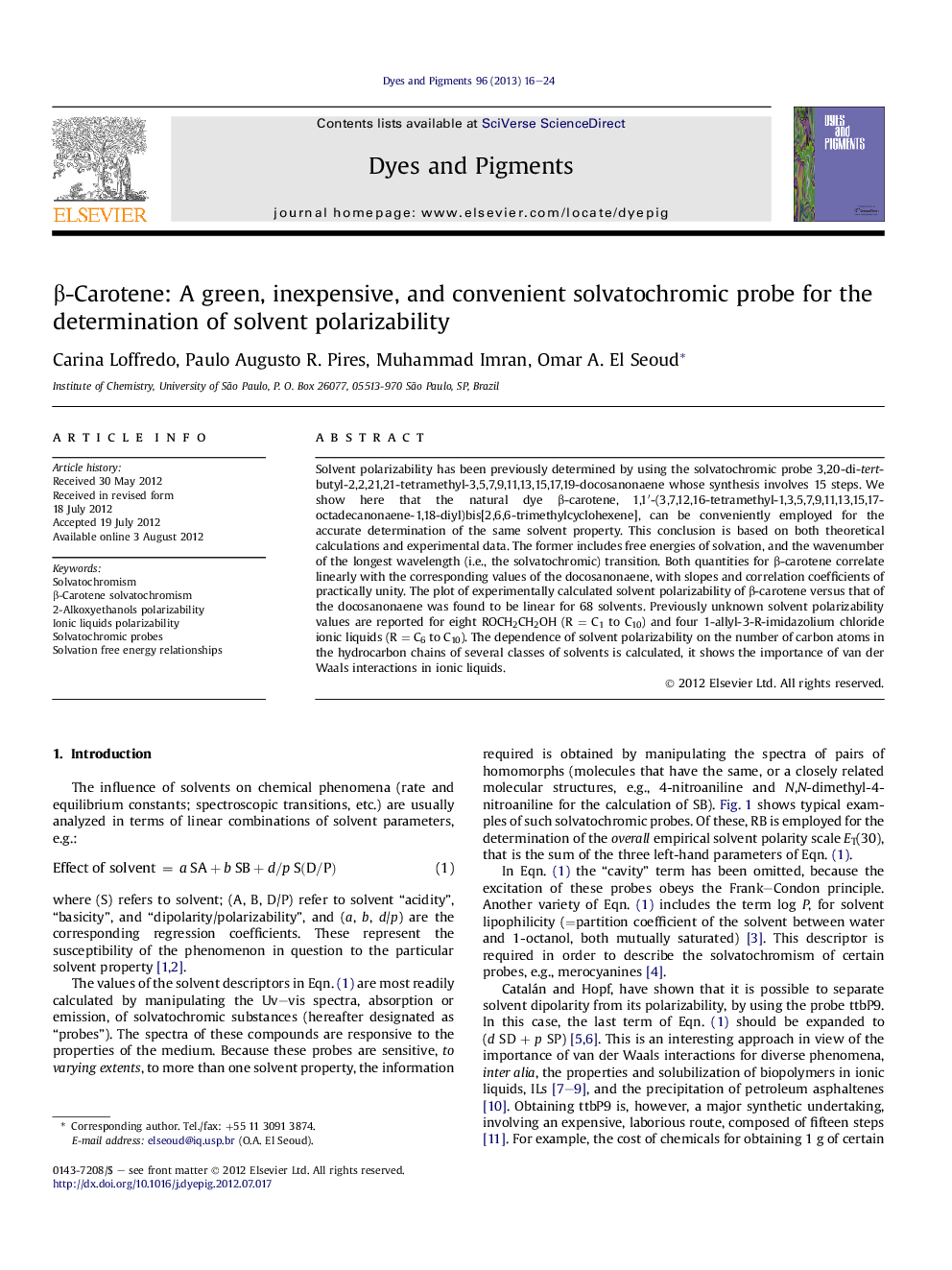| Article ID | Journal | Published Year | Pages | File Type |
|---|---|---|---|---|
| 176868 | Dyes and Pigments | 2013 | 9 Pages |
Solvent polarizability has been previously determined by using the solvatochromic probe 3,20-di-tert-butyl-2,2,21,21-tetramethyl-3,5,7,9,11,13,15,17,19-docosanonaene whose synthesis involves 15 steps. We show here that the natural dye β-carotene, 1,1′-(3,7,12,16-tetramethyl-1,3,5,7,9,11,13,15,17-octadecanonaene-1,18-diyl)bis[2,6,6-trimethylcyclohexene], can be conveniently employed for the accurate determination of the same solvent property. This conclusion is based on both theoretical calculations and experimental data. The former includes free energies of solvation, and the wavenumber of the longest wavelength (i.e., the solvatochromic) transition. Both quantities for β-carotene correlate linearly with the corresponding values of the docosanonaene, with slopes and correlation coefficients of practically unity. The plot of experimentally calculated solvent polarizability of β-carotene versus that of the docosanonaene was found to be linear for 68 solvents. Previously unknown solvent polarizability values are reported for eight ROCH2CH2OH (R = C1 to C10) and four 1-allyl-3-R-imidazolium chloride ionic liquids (R = C6 to C10). The dependence of solvent polarizability on the number of carbon atoms in the hydrocarbon chains of several classes of solvents is calculated, it shows the importance of van der Waals interactions in ionic liquids.
► β-Carotene is a green, convenient probe for determining solvent polarizability. ► β-Carotene is a readily available, inexpensive substitute for synthetic ttbP9. ► Solvent polarizabilities of four ILs and eight alkoxyethanols have been determined.
